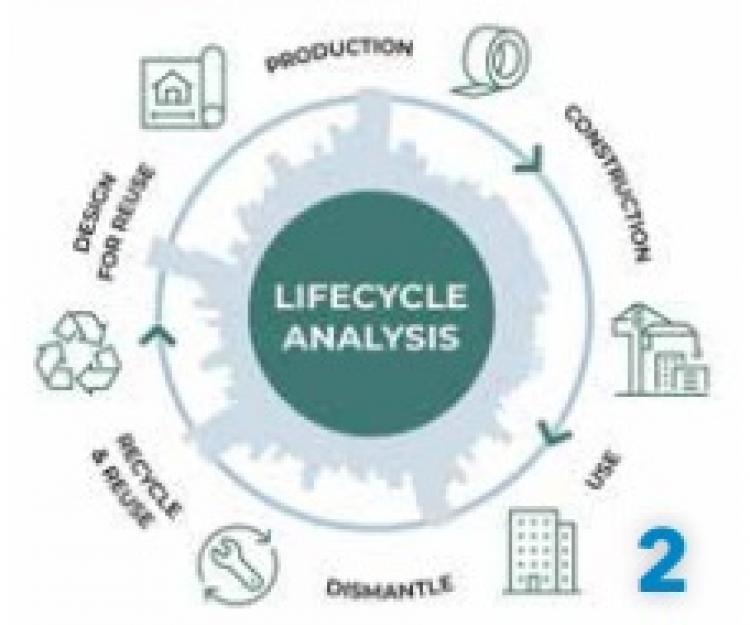
The light steel frame industry can play a vital environmental role by ensuring resources remain in use as long as possible. Ben Towe, Chair of the LSFA, stresses why we need to move away from linear construction principles and embrace circularity.
You may ask what sets steel apart from other building materials in the circulatory debate? Research carried out by the Light Steel Frame Association's (LSFA) technical partner, the Steel Construction Institute (SCI) estimates that there are around 100 million tonnes of steel in buildings and infrastructure in the UK. This 'stock' of steel is an important and valuable material asset that means we are largely self-sufficient in steel and can virtually produce all we need through recycling or reusing our latent stock to satisfy future market demand.
Steel has a unique characteristic as it can be reused and recycled repeatedly without losing its qualities as a building material. All steel used in today's construction projects has some recycled content. The constructional steelwork used in the UK contains an average of 60% recycled content. The recovery infrastructure for steel recycling is highly developed and extremely efficient and has been in place for decades. Current recovery rates from demolition sites in the UK are 99% for structural steelwork and 96% for all steel construction products – figures that far exceed those for any other construction material. Steel is central to transitioning away from a linear approach – take, make, dispose, to circular construction – reduce, reuse, recycle, repeat and offers significant opportunities to mitigate the adverse impact on our environment. We need to adopt innovative approaches that design out waste, use resources more efficiently and keep materials and assets in use for as long as possible to retain their value by re-thinking the way that we design our homes and buildings.
Evolving the value chain
For circular economy principles to successfully work in the built environment, business models need to evolve across the entire value chain. Design optimisation is crucial in a circular construction approach and a lot of thinking has to be done up front. Once the architectural priority was form and function but now there are a raft of considerations coming to the fore such as design for longevity, adaptability and the offsite mantra of Design for Manufacture and Assembly (DfMA). Moreover, it is imperative to plan for a building's 'end' right at the beginning of the design stage to enhance the sustainability value chain through Design for Disassembly (DfD), Design for Reuse (DfR) and recoverability protocols.
But where DfD focuses on the eventual recycling of materials such as steel, DfR plans for the use of specific building components in similar projects during the design stage and requires comprehensive data capture and recording. The Design for Reuse model specifically pre-empts future use, so designs do not require adapting. Capturing and recording performance, testing results, loading capabilities and even dimensions are vital to ensure any pre-existing systems fit within the design specifications and requirements of a new build in the future.
A question of time
Buildings should not only be inherently safe but should also be constructed to stand the test of time. In his recent challenging book 'Humanise' - Thomas Heatherwick states the most sustainable building is one that is designed to last a thousand years. Many light steel frame buildings are BOPAS certified for a design life of 60 years. But according to the SCI, design life predictions for light steel in a 'warm frame' environment is more than 250 years. Robust, reusable, recyclable and adaptable, steel has excellent circular construction credentials. As a material it is strong and durable, as a structural framing system it is lightweight and cost efficient. Steel's material properties make it the ultimate sustainable construction solution, enhancing both the safety and sustainability credentials of light steel buildings
Stay in touch: